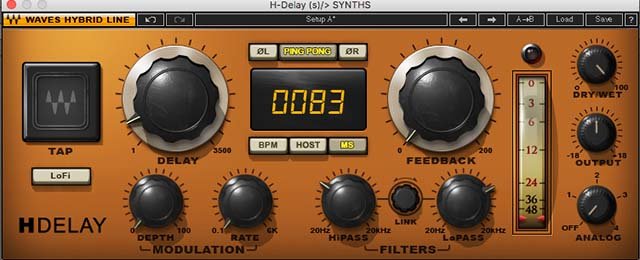Mixing vocals isn’t easy, and the process can be a tedious task:
Vocals are typically the loudest elements in a mix, which leaves little room for error. And since we’re so accustomed to the sound of the human voice, we’re fast to note any imperfections.
Even though every mix is different and requires its own solutions, in this week’s Instagram post we compiled a few techniques that can help you get thicker and bigger sounding vocals.

SHORT HIGH DENSITY REVERB
Try using a reverb with an ambient or room setting, and find a preset with a lot of reflections and a very short decay time.
The quick and numerous reflections will blend in with the original signal making it sound thicker and bigger without cloaking it with too much reverb and depth.
SHORT SLAPBACK DELAY
Similar to short reverbs, short delays are really effective at creating a thick and impressive vocal: This can be done using ‘slapback’ delays.
For psycho acoustic reasons, if the delay is short enough (try 30 to 120 ms) we perceive the signal as coming from the same source, creating a thick, cohesive vocal.


USE SATURATION
Tube-based saturation is great for saturating vocals, as it enhances the 2nd order harmonic, creating a really warm sound, with an emphasis on low frequencies.
If you want both warmth and clarity, try tape saturation, or combine a couple of different types.
USE OPTO COMPRESSION
Optical compression has a great warming and thickening effect on vocals:
By releasing the vocal slowly in a program-dependent way, the dynamics are gently controlled while mild distorts bring the level upward, creating a classic warm vocal sound.
The ‘LA2A’ is a staple for vocal compression, and there are tons of great sounding free emulations: Check out the dedicated article on our website !

USE DYNAMIC EQUALIZATION
Dynamic equalization is great for adding natural-sounding dynamics into
your vocal and get better control over its tone:
Done well, it’s really effective at thickening the sound and avoid frequency build up in important frequency ranges.
Pro Q3 is our go-to tool for this, but if you don’t own it, TDR Nova is your best free alternative.


USE INVERSE EQUALIZATION
Inverse equalization is the process of matching a signal’s frequency response to another, and then reversing the gain to help the vocal cut through dynamically.
To do this, side-chain your full instrumental and match your vocals EQ to it.
Then highlight all bands and inverse the gain, but be sure to do this subtly.
Some plugins offer a streamlined way to achieve this like Wavefactory’s Trackspacer.
USE UPWARD COMPRESSION
Low-level upward compression can bring quieter details up and reduce the dynamic range similarly to saturation but without coloring the signal or generating additional harmonics.
OTT (or XFer emulation) is great for that, as long as settings are very subtle:
Reducing the amount a lot and dragging the middle bars up to create only upward compression should result in a more intelligible vocal and emphasized details.

You may also be interested in...Future Chill Hop Sessions Vol.2



